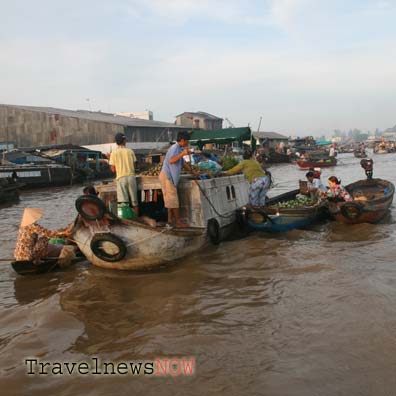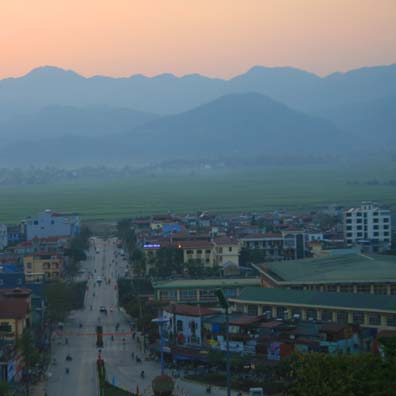Our review of the spells of the Winter Monsoon in Vietnam in 2022 is a summary of the spells of the Winter Monsoon in 2022 which helps travelers to plan travel holidays to Vietnam in 2022, 2023 and the coming years.
The Winter Monsoon in Vietnam or the Northeasterly Wind (Gio Mua Dong Bac) dictates the winter time in the country. The Winter Monsoon in Vietnam brushes through the northern region first, then the Central Coast, and to certain extent the South of Vietnam.
Although we call the Winter Monsoon or the Northeasterly Wind but there are two types of wind: one originates from Tibet and the other from Siberia. The former blows in late autumn and early winter in northern Vietnam, this wind is dry and causes temperatures in the North of Vietnam drop mildly. This wind often brings the most beautiful weather pattern in northern Vietnam and the Vietnamese loves it!
If you happen to travel to Vietnam in October and early November and experience sunny, dry and breezy days and you feel extremely pleasant waking up in the morning, then it is thanks to this wind. It is this wind that heralds in ‘Heo May’ - the best autumnal weather pattern in the North.
This same wind in March and early April is a bit different. This time winter is fading away and the Summer Monsoon (Southeasterly Wind) sometimes prevails and the North have sunny and warm days. The Summer Monsoon is warmer and humid which causes foggy, and sometimes extremely moist days (Nom Am) in northern Vietnam which is still under weak influence of the Winter Monsoon (from Siberia). These moist days are brought to an end after each new spell of the Winter Monsoon (from Tibet).
It is this Winter Monsoon from Tibet that causes mild and chilly days in northern Vietnam at the end of the winter making the winter ‘linger’ a bit longer and it is called Ret Nang Ban! So people think the winter might have been over and it is back after each spell of the Winter Monsoon from Tibet.
The wind coming from Siberia is more humid blowing along the coast all the way to the North of Vietnam. This winter often brings about some light rain in the North for a couple of days and the temperatures drop substantially and suddenly making the winter in the North of Vietnam a real cold one!
The Central Coast of Vietnam and sometimes the Central Highlands of Vietnam have incessant rain due to the Winter Monsoon which blows along the coast and through the sea, and which is blocked by the Truong Son Mountain Range to the west. During this time, clouds keep accumulating and rains keep pouring down the Central Coast.
When the Winter Monsoon prevails and if there is a typhoon forming in the East Sea, then the typhoon is often pushed southward to the Central Coast of Vietnam causing torrential rain and flooded places in this region and the Central Highlands.
The Winter Monsoon does not have much effect in southern Vietnam as it is weakened substantially by the Hai Van – Bach Ma Mountain Range (between Hue and Da Nang). The only often-visible effect is that there is lack of rain in southern Vietnam during the time of the cold winter in northern Vietnam. But recently it has happened that Ho Chi Minh City (Saigon) and Can Tho (in the Mekong Delta) have experienced chilly days (less than 20oC thanks to the Winter Monsoon.
The Winter Monsoon does however have impact on the offshore islands all over Vietnam. This wind causes rough sea even in the area around the Con Dao Islands and the Phu Quoc Island. The Phu Quoc Island is located in the Rach Gia Gulf, southwest of Vietnam.
1/ First spell of the Winter Monsoon in Vietnam in 2022 was on 10-October. This is about 1 month and 10 days earlier than usual.
2/ A renewed spell of the Winter Monsoon was on 17-October at the same time that the Nesat Typhoon was plowing its way towards the Central Coast of Vietnam.
3/ Another renewed spell of the Winter Monsoon to northern Vietnam on 19-October and 20-October made some light rain, overcast skies and new temperatures low of 17-24oC in the lowlands in northern Vietnam. It was 1-3 degrees lower in the mountainous regions.
The rain was caused by the combination of the Winter Monsoon and influence from the typhoon-reduced (coded Nesat, Typhoon No. 6 in Vietnam in 2022) tropical depression. The renewed spell of Winter Monsoon took place in exact time in 2021 which made northern Vietnam cold and dry. This year it was rainy in northern Vietnam due to influence of the tropical depression.
4/ A weak spell of monsoon to northern Vietnam on 3-November
5/ Successive spells of weak Winter Monsoon (North Easterly Wind) caused torrential rain in the Central Coast of Vietnam 15-November to 23-November.
6/ A strong spell of Cold Northeasterly Wind hits northern Vietnam from 30-November bringing the whole region into winter time with cold temperatures. The North had enjoyed a very unusual long autumn with lovely weather in 2022.
7/ A strengthening spell of the Northeasterly Wind started having impact in the North of Vietnam from afternoon of 4-December bringing overcast skies and cold temperatures to the region. The Central Coast and Central Highlands of Vietnam got the wind a day later which caused torrential rain in these regions.
8/ A strengthening spell of the Northeasterly Wind started having impact in the North of Vietnam from afternoon of 9-December bringing the averaged temperatures in the region 1-2 lower. Except for a night with light rain, the North enjoyed dry and cold days. The Central Coast had heavy rain again. The Central Highlands and South of Vietnam had some cloudy and some sunny days.
9/ A strengthening spell of the Northeasterly Monsoon started having impact in Northern Vietnam in 16 and 17-December bringing the temperatures lower, the winds were strong and it was dry in the whole region.
10/ On 20-December strengthening spell of cold wind hit Northern Vietnam. The other regions were affected a day after. Temperatures in Northern Vietnam remained cold.
11/ On 27 and 28-December a strengthening spell of cold wind hit Northern Vietnam. The other regions in Vietnam was affected within 1 day later. This was the strongest and coldest spell of cold wind in 2022.























